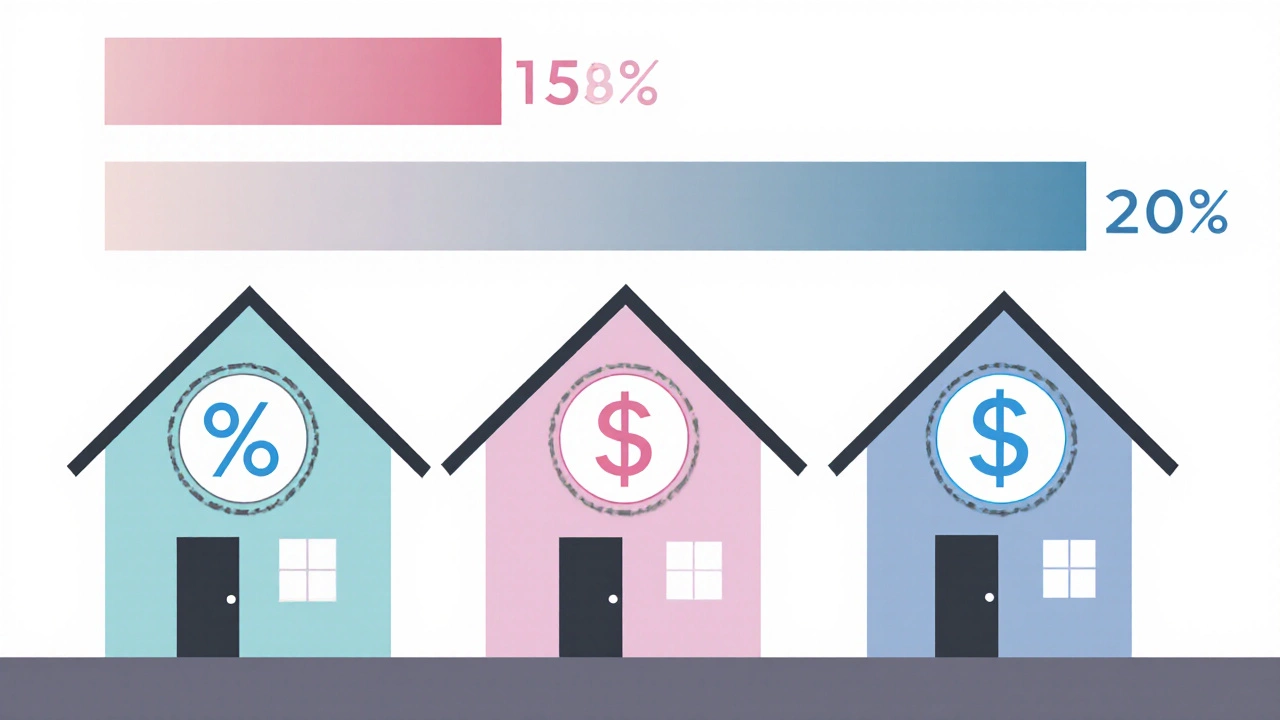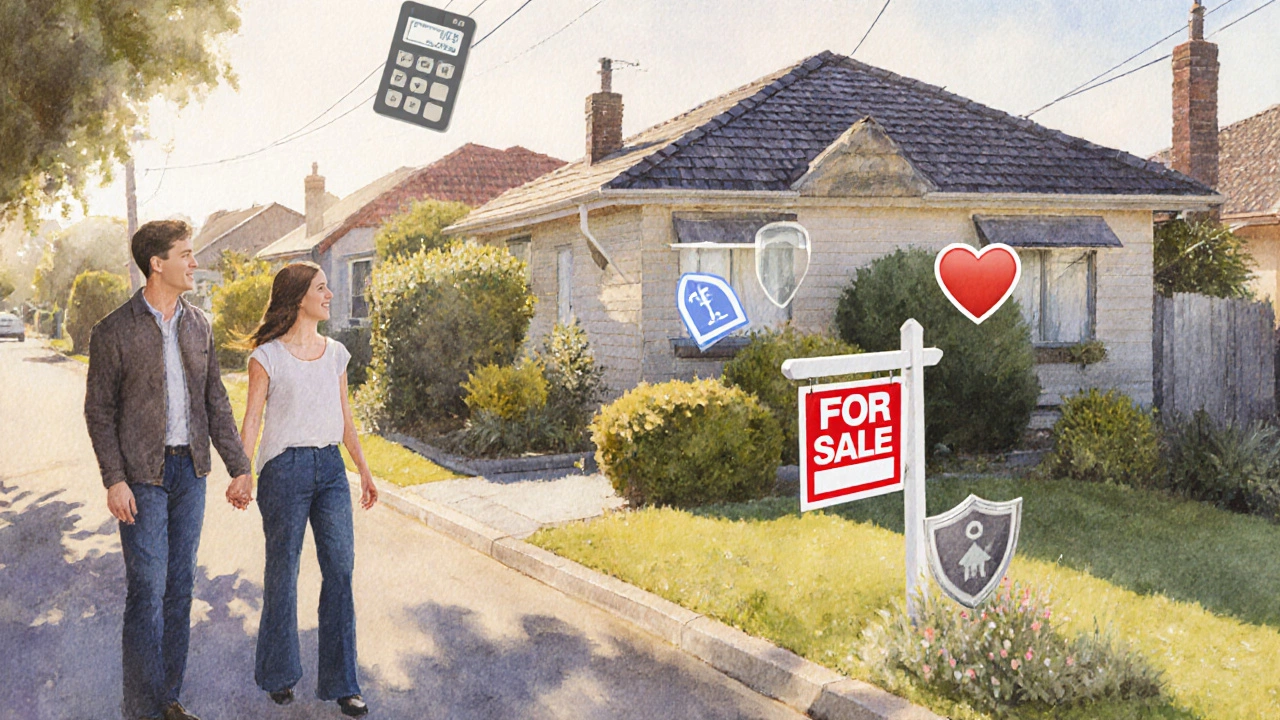Mortgage Affordability Calculator
Calculate Your Home Affordability
This tool calculates how much house you can afford on a $70,000 salary based on New Zealand mortgage guidelines and current market rates.
Your Results
Maximum Monthly Housing Budget: $0
Maximum Loan Amount: $0
Maximum House Price: $0
Estimated Monthly Payment: $0
Debt-to-Income Ratio: 0%
Your Down Payment: $0
Quick Takeaways
- With a $70,000 annual salary, most lenders let you borrow roughly $250,000-$300,000 after accounting for debt‑to‑income limits.
- A 20% down payment dramatically lowers monthly payments and may shave $50‑$100 off your loan each month.
- Keeping your total housing costs (mortgage, taxes, insurance) under 30% of gross income is a safe rule of thumb.
- Interest rates and loan term (15‑year vs 30‑year) have the biggest impact on what price feels affordable.
- Improving credit score and reducing existing debt can boost the amount you qualify for by up to 10%.
When you hear “how much house can I afford,” the answer hinges on a handful of numbers that turn a vague salary figure into a concrete price tag. Below you’ll find a step‑by‑step breakdown that starts with your $70,000 paycheck and ends with a realistic budget for a family‑size home in Auckland or another major market.
Affordable House is a property whose purchase price, monthly payments and associated costs comfortably fit within a buyer’s income and debt profile. For a $70,000 earner, affordability depends on five core variables: gross income, existing debt, down payment, interest rate and loan term.
1. Turn Salary into Monthly Income
First, convert your yearly salary to a monthly figure. $70,000 ÷ 12 = $5,833 before tax. In NewZealand, after‑tax take‑home pay for that bracket hovers around $4,300-$4,500 per month, depending on deductions. Use the net amount for housing calculations, because it reflects the cash you actually have to cover mortgage, rates, insurance and everyday expenses.
2. Know Your Debt‑to‑Income (DTI) Ratio
Debt-to-Income Ratio is a percentage that compares your total monthly debt payments to your gross monthly income. Most banks cap DTI at 36% for a qualified borrower; some allow up to 43% if you have a strong credit score.
Example: If you owe $500 a month on a car loan and $200 on a credit card, your total debt is $700. With a $5,833 gross income, the DTI is 12%-well below the ceiling, leaving room for a mortgage.

3. Calculate Your Maximum Monthly Mortgage Payment
Take 30% of gross income as a conservative housing budget: $5,833 × 0.30 = $1,750. This figure should cover principal, interest, property taxes, and home insurance (often called PITI). If you’re comfortable stretching to the 36% DTI limit, you could afford about $2,100 per month, but that leaves less wiggle room for utilities and savings.
4. Work Backwards From Monthly Payment to Loan Amount
Use a Mortgage Calculator an online tool that translates payment, rate and term into loan size. Plug in:
- Monthly payment: $1,750
- Interest rate: 5.5% (average 30‑year fixed rate in NZ, October2025)
- Loan term: 30years
The result is roughly a $300,000 loan. Add your down payment, and you get the total house price you can realistically target.
5. Down Payment Makes a Big Difference
Down Payment is the cash you put upfront, expressed as a percentage of the purchase price. A 20% down payment on a $350,000 home is $70,000-often the biggest hurdle for first‑time buyers. If you can only muster 10% ($35,000), the loan size grows to $315,000, raising the monthly payment by about $70.
Why does a larger down payment matter?
- Lower loan amount → smaller monthly payment.
- Potentially qualify for a lower interest rate (banks reward lower LTV ratios).
- Avoid mortgage insurance, which can add 0.5%‑1% of the loan annually.
6. Interest Rate and Loan Term: The Real Levers
An extra 0.5% in interest rate can add $50‑$70 to a $1,750 payment. Switching from a 30‑year to a 15‑year term cuts the loan term in half, but monthly payments jump by roughly 30%-still doable if your DTI is low.
Based on current NZ market data (RBNZ), 30‑year fixed rates sit at 5.5%±0.3%, while 15‑year rates hover around 4.9%±0.2%.

7. Real‐World Example: Auckland Suburb
Assume you have:
- Net monthly income: $4,400
- Existing debts: $600/month
- Down payment saved: $40,000
- Desired loan term: 30years
- Interest rate: 5.5%
Step‑by‑step:
- 30% of gross income = $1,750 max PITI.
- Using the mortgage calculator, $1,750 at 5.5% for 30years yields a loan ≈ $300,000.
- Add $40,000 down → total price ≈ $340,000.
- Property taxes & insurance in Auckland average $300/month, leaving $1,450 for principal + interest, which aligns with a $260,000 loan. Adjust down payment to $55,000 to reach the $340,000 price point without exceeding budget.
Result: You can comfortably buy a 3‑bedroom house priced around $340,000 in suburbs like Ōtāhuhu or Manukau, provided you keep other debts low.
8. Tips to Stretch Your Budget Further
- Boost credit score: Move from 650 to 720 and you could shave 0.3%‑0.5% off the rate.
- Clear high‑interest debt: Reducing a $5,000 credit‑card balance frees up ~ $150 of monthly cash.
- Consider a guarantor: A family member with strong credit can help you qualify for a larger loan.
- Shop for lenders: Some credit unions offer rates 0.2% lower than big banks.
- Explore government schemes: NewZealand’s First‑Home Grant can add $10,000‑$20,000 to your deposit.
9. Next Steps
1. Gather recent payslips, tax returns and a list of monthly debts.
2. Use a trusted Mortgage Calculator to model different down payments and interest rates.
3. Get a pre‑approval from at least two lenders-compare the quoted rates, fees and loan‑to‑value ratios.
4. If the numbers look tight, revisit your budget: cut discretionary spend, delay large purchases, or increase savings for a bigger down payment.
5. Once pre‑approved, start house hunting in neighborhoods that match your price range. Remember to factor in transport, schools and future resale potential.
| Down Payment % | Down Payment $ | Loan Amount $ | Monthly P&I $ |
|---|---|---|---|
| 10% | 35,000 | 315,000 | 1,792 |
| 15% | 52,500 | 297,500 | 1,695 |
| 20% | 70,000 | 280,000 | 1,595 |
Frequently Asked Questions
What DTI ratio is safest for a $70,000 salary?
Keeping total housing costs at or below 30% of gross income and total debt (including the mortgage) under 36% is the most conservative approach. It leaves room for emergencies and future upgrades.
Can I qualify for a loan with a lower down payment?
Yes, many lenders accept 10% down, but you’ll pay mortgage insurance and possibly a slightly higher rate. A larger down payment reduces monthly costs and improves your loan‑to‑value ratio.
How much does a $70,000 earner need to save for a deposit?
Target 15%-20% of the price you’re eyeing. For a $340,000 home, that’s $51,000-$68,000. Government grants can offset part of this amount.
Will a 15‑year mortgage be better?
A 15‑year term lowers total interest paid by ~30% and often grants a lower rate, but the monthly payment climbs by roughly 30%‑35%. It makes sense if you have little debt and can afford the higher payment.
How does credit score affect my borrowing power?
A score above 720 typically nets you the best rates and allows a larger loan‑to‑value ratio. Raising your score by 50 points can shave 0.2%‑0.3% off the interest rate, translating to $30‑$50 less per month on a $300k loan.
